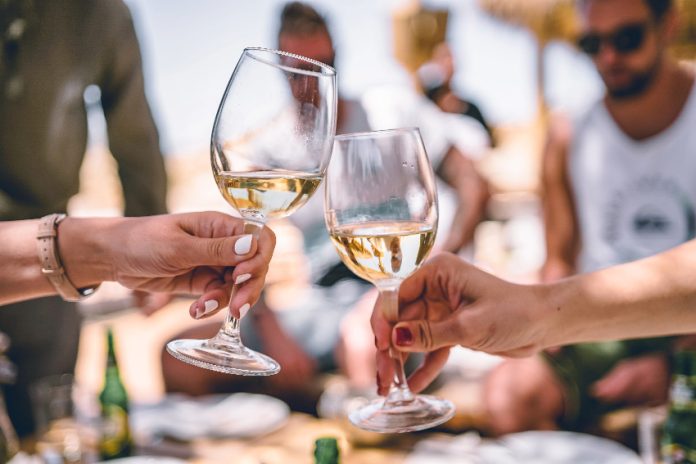Along with the holidays come yearly etiquette “situations” we might not usually encounter. Drink toasting is one of those, and while etiquette norms have relaxed over time, it’s still helpful to know what’s expected in more formal situations.
The long history of drink toasting begins in 6th Century Greece, where it was a way to praise the Gods and ask for health and prosperity. That’s not so different from what we do now in a multitude of languages and countries.
Ever wondered why it’s called toasting? In 17th-century Europe, adding a crouton or a tiny piece of burnt toast to one’s glass of wine was thought to improve the taste of low-quality wine. The practice also became a popular party snack. Hopefully, the wine you’re serving today is up to par, and this part of the tradition won’t be necessary.
In any language, the most basic toast is to good health; Germans, Swiss, and Austrians say Prost; in France and Belgium, folks exclaim Santé!; in Danish lands, Skoal; and in Italy, Salute! or Cin Cin! and Mexico is no different.
As in other Spanish-speaking countries, a toast of Salud! (Good health!) is offered at the start of a meal or event. Traditionally, only men in Mexico lead toasts, but that custom is changing with the times.
Drink Toasting Do’s and Don’ts
- Let the host lead the first toast of the evening once all guests are seated and have had their glasses filled. After that, anyone can lead another toast, waiting until dessert is served. Unless it is a small group at a dinner table, the host stands while the group remains seated. Etiquette expert Emily Post suggests something simple like, “Here’s to good cheer, health, and happiness for us all.”
- Be prepared. If you are the host or family member expected to give the toast, plan what you are going to say and practice a little. A toast should be short, positive, and coming from the heart, conveying the appropriate message for the gathering without disrupting the party. A touch of humor is OK, but don’t embarrass the honoree. Always stand when leading a toast.
- Tapping the side of your glass with a knife to begin a toast isn’t necessary. Instead, stand and lift your glass to get the attention of the assembled folks. Ahead of time, ask friends or family to help you quiet the room when they see you stand with your glass raised.
- Empty glass? While not the best scenario, it happens. Instead of creating a disturbance by frantically looking for a refill, just raise your empty glass and pretend to take a sip. Next time, think ahead! Not a fan of alcohol? Juice, water, or a non-alcoholic beverage are all acceptable for toasting.
- The tradition of clinking glasses originates from the idea that clinking would drive away evil spirits. (If that seems important, then by all means go ahead!) But it’s not necessary or required to stretch across the table to clink everyone’s glass; clink to the left, clink to the right, smile as you sweep your eyes around the table, and you’re done.
- If the toast is in your honor, it’s not proper etiquette to drink to yourself or even raise your glass. Instead, acknowledge the toast and everyone’s subsequent sips with a smile, a nod, and eye contact. When everyone has put their glasses back on the table, that’s your cue to take a sip, rise, and thank whoever offered the toast. A short reciprocal toast can be made, but is not expected or required.
- Toasting the host is the perfect way to show appreciation for a wonderful evening. Etiquette experts recommend something simple like “To Brad, a true friend, great host, and terrific cook,” or “Thank you for including all of us in such a fun and festive New Year’s Eve party. You went out of your way to make this evening special. Here’s to Judy, a lovely and gracious host.”
Janet Blaser is the author of the best-selling book, Why We Left: An Anthology of American Women Expats, featured on CNBC and MarketWatch. She has lived in Mexico since 2006. You can find her on Facebook.
